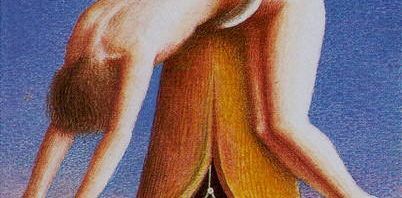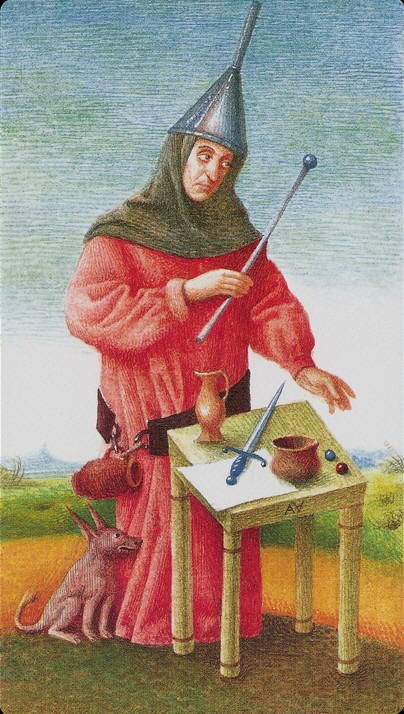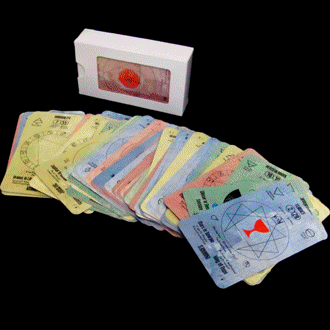Hieronymus Bosch’s unusual vision of the 16th century provides the filter through which Atanassov worked to create the Bosch Tarot. The quaint, the puzzling, the mildly amusing, the simply absurd, and sometimes even the lovely go hand-in-hand with the rawest monstrosity and the most disturbingly grotesque images.
Hieronymus Bosch (c. 1450 – 9 August 1516) was an Early Netherlandish painter. His work is known for its fantastic imagery, detailed landscapes and illustrations of moral and religious concepts and narratives. Within his lifetime his work was collected in the Netherlands, Austria, and Spain, and widely copied, especially his macabre and nightmarish depictions of hell.
Little is known of Bosch’s life, though there are some records. He spent most of it in the town of ‘s-Hertogenbosch, where he was born in the house of his grandfather. The roots of his forefathers are from Aachen, in present Germany. His pessimistic and fantastical style cast a wide influence on northern art of the 16th century, with Pieter Bruegel the Elder his best known follower. His paintings have been difficult to translate from a modern point of view; attempts to associate instances of modern sexual imagery with fringe sects or the occult have largely failed. Today he is seen as a hugely individualistic painter with deep insight into man’s desires and deepest fears. Attribution has been especially difficult; today only about 25 paintings are confidently given to his hand. His most acclaimed works consist of a few triptych altarpieces, the most outstanding of which is The Garden of Earthly Delights.
The Hieronymus Bosch Tarot deck by A. A. Atanassov















